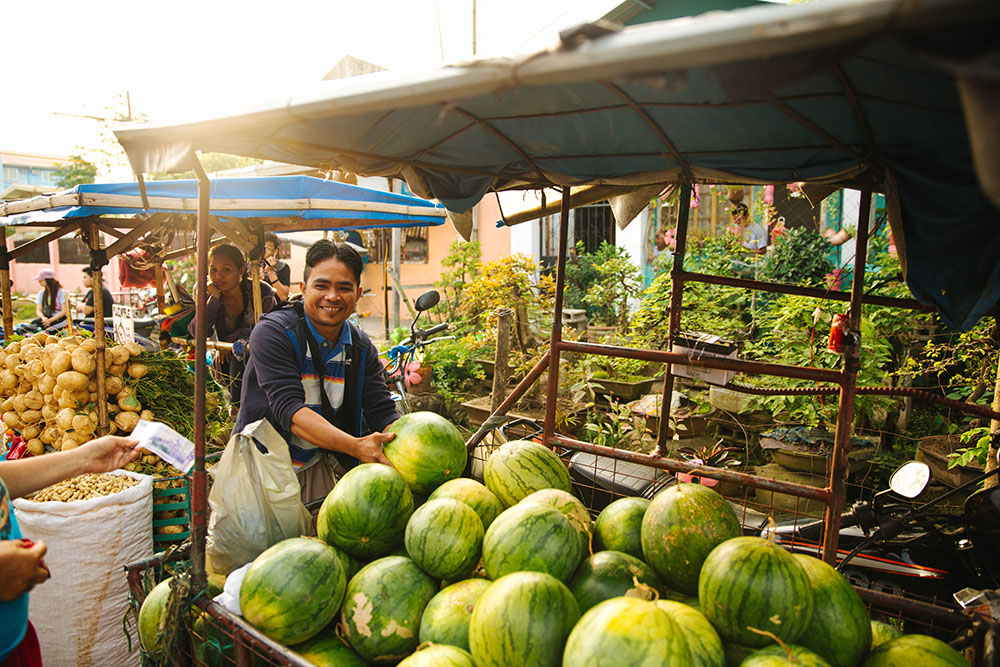Between fast food feasts and 30-minute meals, the slow food movement is taking root. True to its name, it is steadily growing in time to answer our queries about sustainability as our food resources reach their limits.
The formally recognized Slow Food Movement began in the late 1980s in Italy. Today, it has grown into a worldwide community made of different convivia, as the organization calls its various chapters. In the Philippines, the Slow Food Movement has found allies from the government sector down to the pioneering chefs who champion its principles of good, fair, and clean food practices.
Undersecretary Berna Romulo-Puyat of the Department of Agriculture (now the Department of Tourism secretary) talks about the movement and how it falls in line with her department’s mission to raise awareness about our heritage. “The philosophy is about ‘good, clean, fair.’ It’s fair to the customers and to the farmers. Fair means that it’s also flavorsome and clean, meaning the food is produced in a sustainable manner.”
“It’s also taking an active role, not just by eating good food but also going out of your comfort food. It’s meeting the farmers and gaining an understanding of how food is made and having an appreciation for it. It’s not just the opposite of fast food, it’s food produced in an artisanal manner.”
She then goes on to elucidate on the Ark of Taste, which consists of produce native to the Philippines but is slowly disappearing in favor of GMO and foreign, capitalist-fueled varieties. There are currently 42 products including purple corn, pili nut, and adlai, an alternative to rice from Mindanao.
“It’s more nutritious than rice,” says Romulo-Puyat. “Heirloom rice is also one of them and it not only helps with preserving that variety, but every time you buy it, you help support the Cordillera farmlands and the female farmers,” she says.

It was actually Margarita Forés who introduced the undersecretary to the slow food movement. “She really gives respect to the food and knows the value of growing and buying local,” she says.
Sure enough, more and more chefs have caught the allure of the slow food movement to define their cuisine and menu. Chef Robby Goco of Cyma Greek Taverna and Green Pastures recalls his fascination for slow food. “In Greece, they only flavor their food with a few ingredients. They don’t hide the flavor of the food. It’s so different from what we have now where it’s all about artificial flavoring, mass producing one thing, and extending shelf life.”
“When I was developing my menu, I couldn’t find all the ingredients I wanted in the grocery,” says Goco. “I then went to the farms and looked for the farmers who could supply me with what I wanted or who even introduced me to unique produce I didn’t know of.” What happened was a continuous dialogue between the chef and the farmers he would meet to create unique dishes, with ingredients that haven’t been utilized in the mass market. “I realized also how much this would help the farmers and how if you make this popular, you can change our approach to food.”
For Berna Romulo-Puyat, the slow food movement involves “meeting the farmers, gaining an understanding of how food is made, and having an appreciation for it.”
“Seventy percent of my time is dedicated to looking for food,” he says. “What’s happening now is how it was before. You investigate every element that goes into making your food.”
Chef Jordy Navarra of Toyo Eatery echoes the same sentiments. He says that slow food influences the creation of more innovative dishes. “The challenge with having a restaurant is consistency, which isn’t achievable with slow food. But that’s part of the beauty. It’s slightly different every time and it will taste another way each day. Limes on Monday are different from the limes on Tuesday.”
He, however, has embraced it as part of his restaurant’s brand DNA. “People already know how we go about doing things and making dishes. You make them understand how it is with your ingredients and your approach with food. It is what we have and what we can offer, and it’s not the usual but people are excited.”
Indeed, slow food exists in dichotomies. It is both new in the sense that it goes against the usual practices of mass consumption, but it is also going back to grassroots, to how food should really be. And this is what farmers greatly appreciate.
“The challenge with having a restaurant is consistency, which isn’t achievable with slow food. But that’s part of the beauty. It’s slightly different every time and it will taste another way each day. Limes on Monday are different from the limes on Tuesday,” says Jordy Navarra.
On a more relatable level, Paula Aberasturi of Down to Earth was growing flowers when she realized that it would be better to grow her own food rather than buy it. “We realized that grass-fed cows were just that, cows eating grass.” With no feeds and other growth-enhancing injections, Aberasturi and her husband Niccolo understood how it was much easier to go back to the basics. “We look at small farmers for unique vegetables that we used to eat in the Philippines. We used open pollinated seeds, which are unlike the hybrid seeds we import.”
These days, Down to Earth holds taste education workshops and other programs to introduce the Philippines’ natural biodiversity. “Some chefs would rely on the farmers to tell them what they have. Otherwise, if chefs don’t know about it, they won’t use it.” In other words, Aberasturi doesn’t see the slow food movement as a total overhaul of your life.
“You don’t have to be a chef or a farmer. As a consumer, you just have to know and be more conscious of what you’re buying and eating.”
Originally published in F&B Report Vol. 13 No. 3





